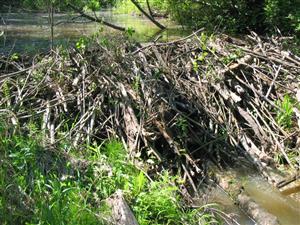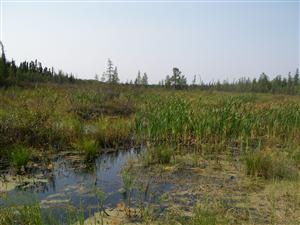Factors Affecting Water and Sediment Quality: River Obstructions
River obstructions, such as dams, can have significant impacts on water and sediment quality due to changes in flow patterns. Obstructions result in upstream flooding and in slower flows both upstream and downstream. These reduced flows, and, in some cases, the dissipation of energy as water seeps slowly through the obstruction, result in a more stable river environment downstream of the dam, with less meandering and bank erosion. Dams also tend to reduce or eliminate any pattern of regular inundation and deposition of nutrient-rich sediments on floodplains in favour of a more regular flow regime.
Potential impacts of river obstructions on water and sediment quality include:
Changes in sediment load. As flows slow down upstream of a river obstruction, the bedload (sediment carried along the river bed), suspended sediment, and organic material settle to the bottom, changing the character of the sediments. The settling of sediments can result in lower concentrations of suspended sediment downstream of the obstruction and the loss of gravel and sand bars.
Changes in water temperature. Slower-moving water upstream and downstream of a dam can warm more than natural river flow due to longer sun exposure. Deep reservoirs or ponds upstream of the obstruction can become stratified.
Changes in chemical characteristics. The upstream flooding that results from river obstructions can lead to a surge of nutrients and other chemical compounds, released from soils and the decomposition of drowned vegetation in flooded areas. This can potentially lead to high biological productivity, which can persist for varying lengths of time depending on the amount of flooded vegetation, soil composition, and basin characteristics. However, high biological productivity can consume oxygen, potentially leading to low oxygen levels in bottom waters and the conversion of chemicals between different forms (e.g., the reduction of nitrate, NO3–, to ammonium ion, NH4+, under conditions of low oxygen). In some areas, mobilization of mercury in reservoirs and flooded areas has led to increased mercury contamination of fish.
In the Athabasca oil sands region, numerous small dams constructed by beavers have created an extensive pattern of wetlands, pools and ponds. Beavers also tend to fill culverts, creating ponds upstream of roads (Foote 2007). The W.A.C. Bennett Dam in British Columbia is a large dam that has had significant impacts on aquatic ecosystems in the Peace-Athabasca Delta.










